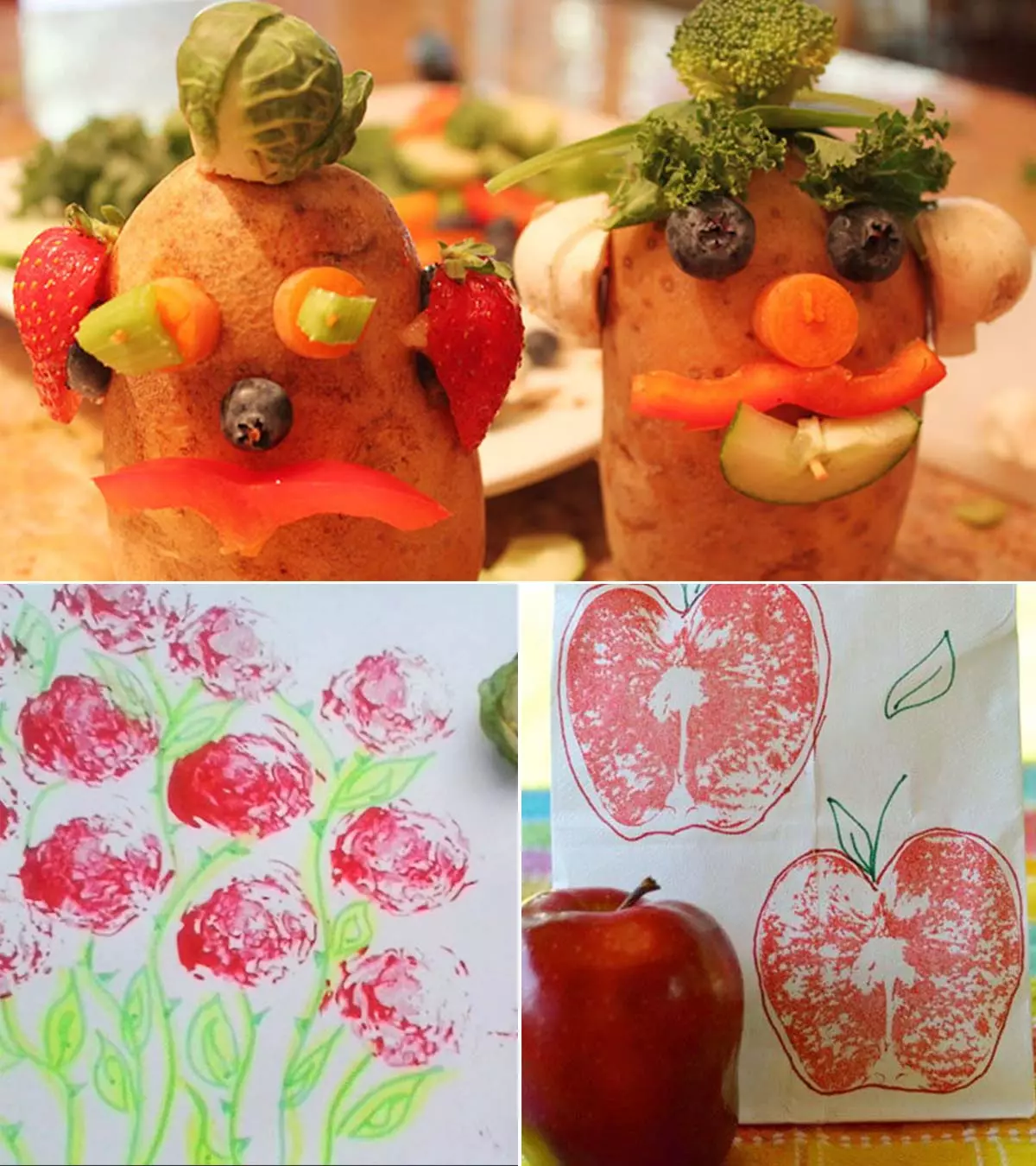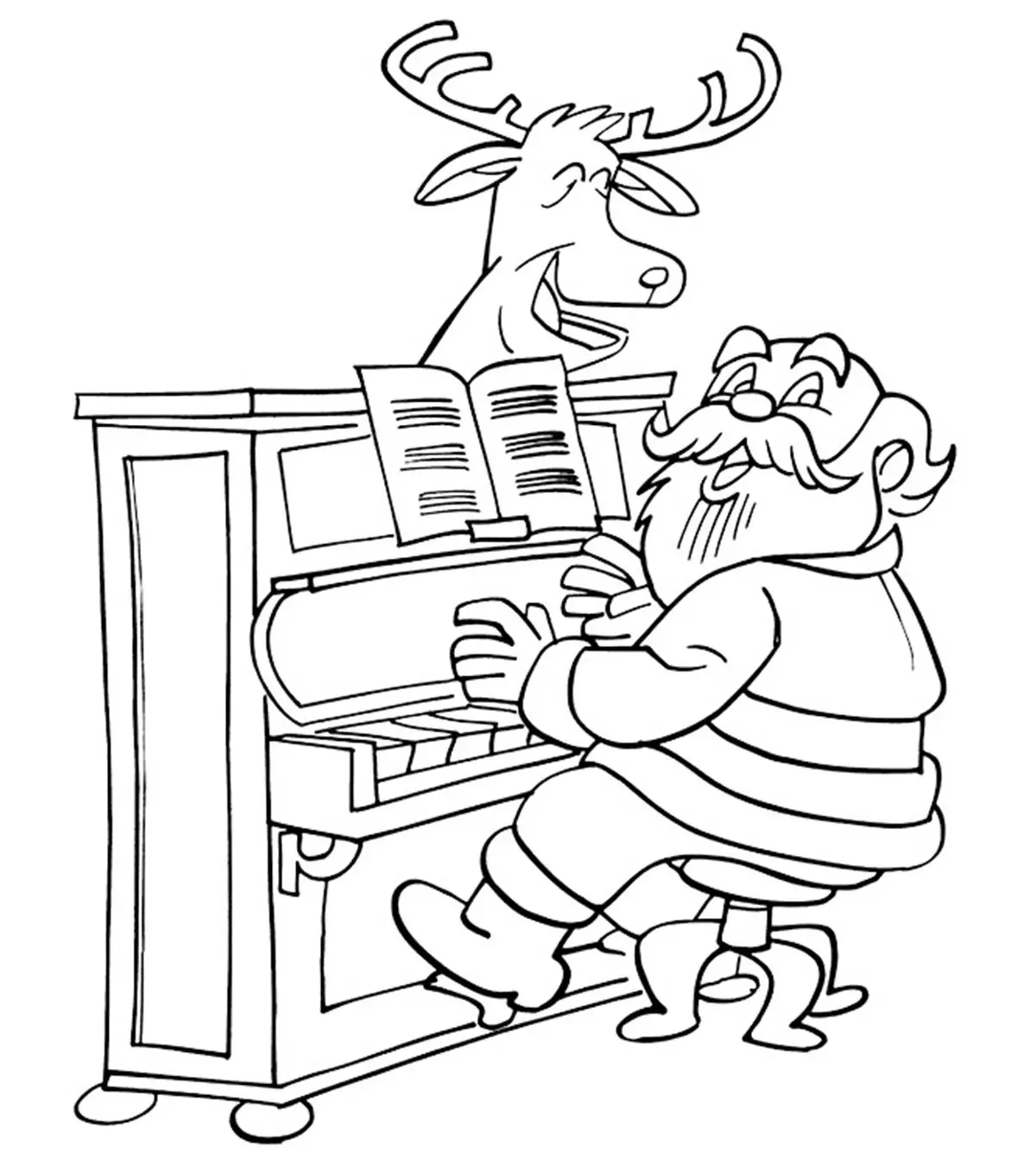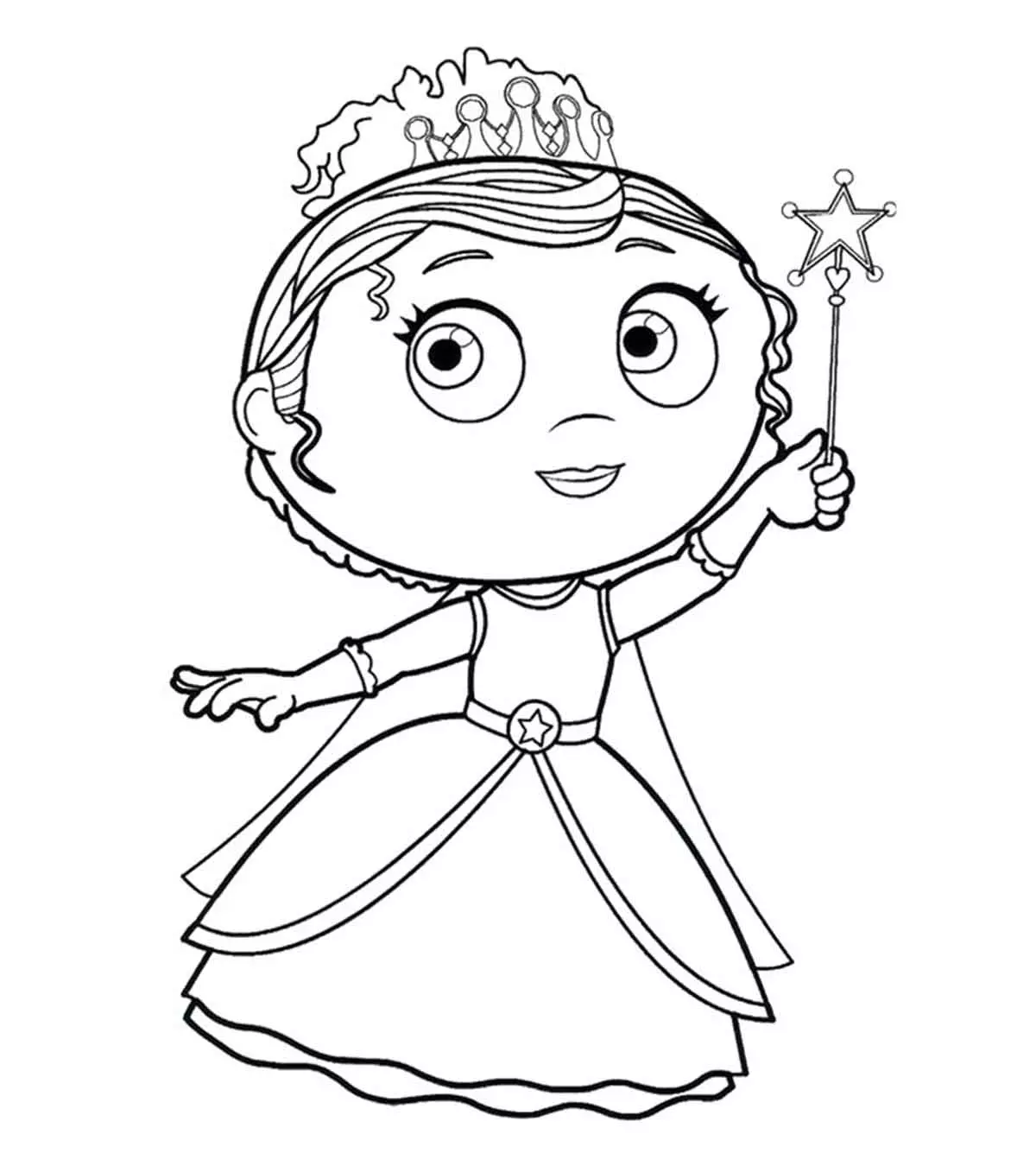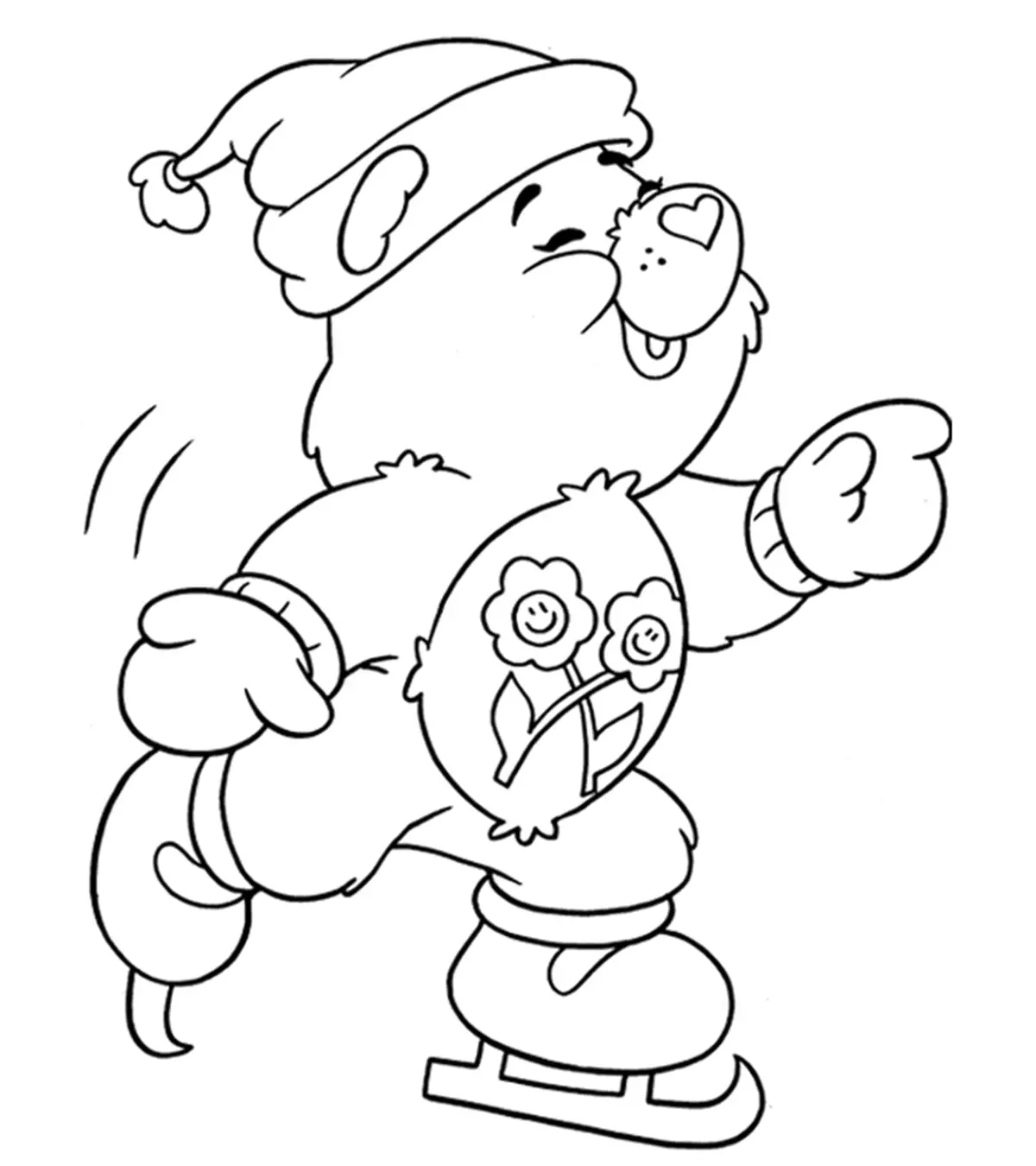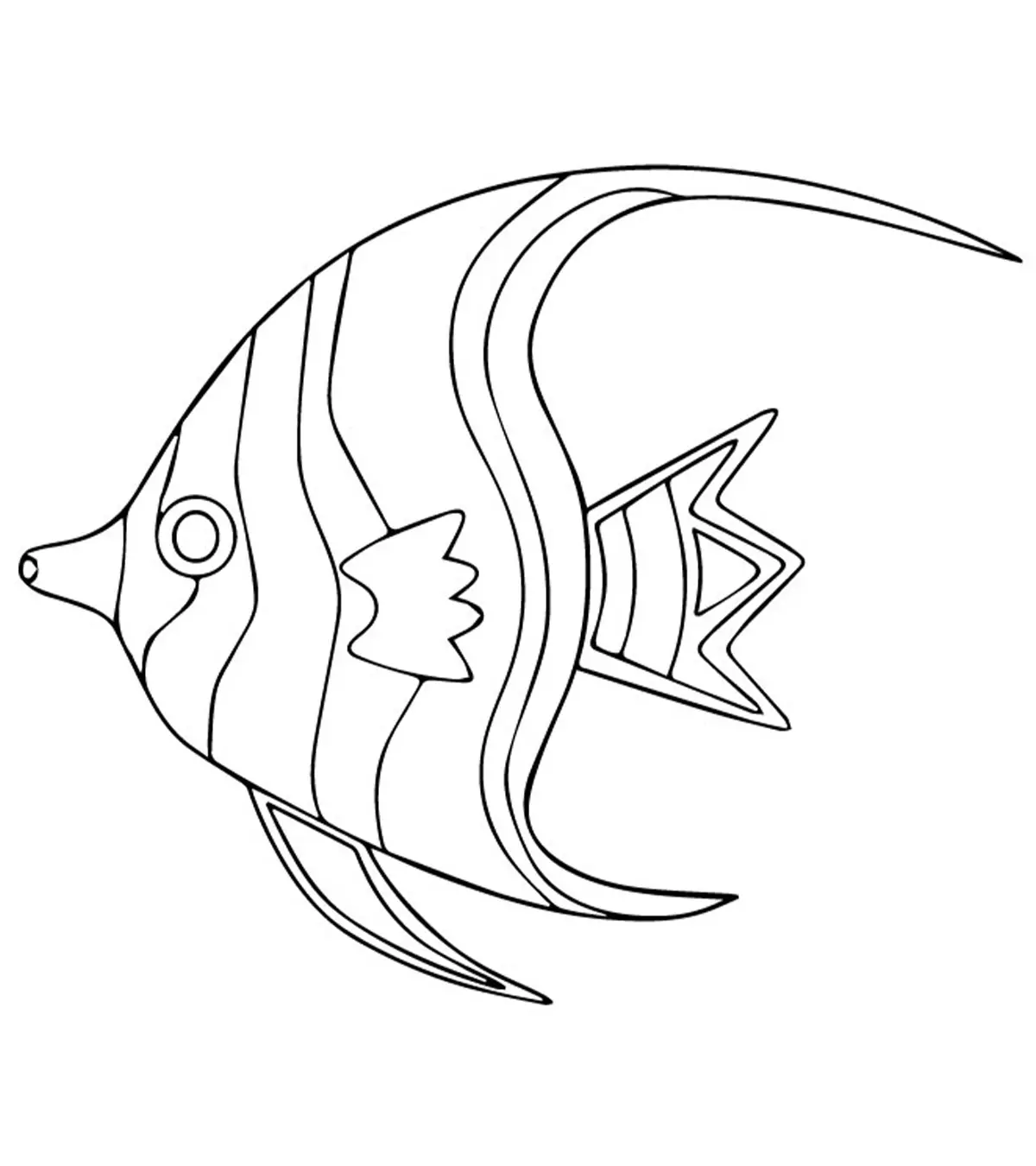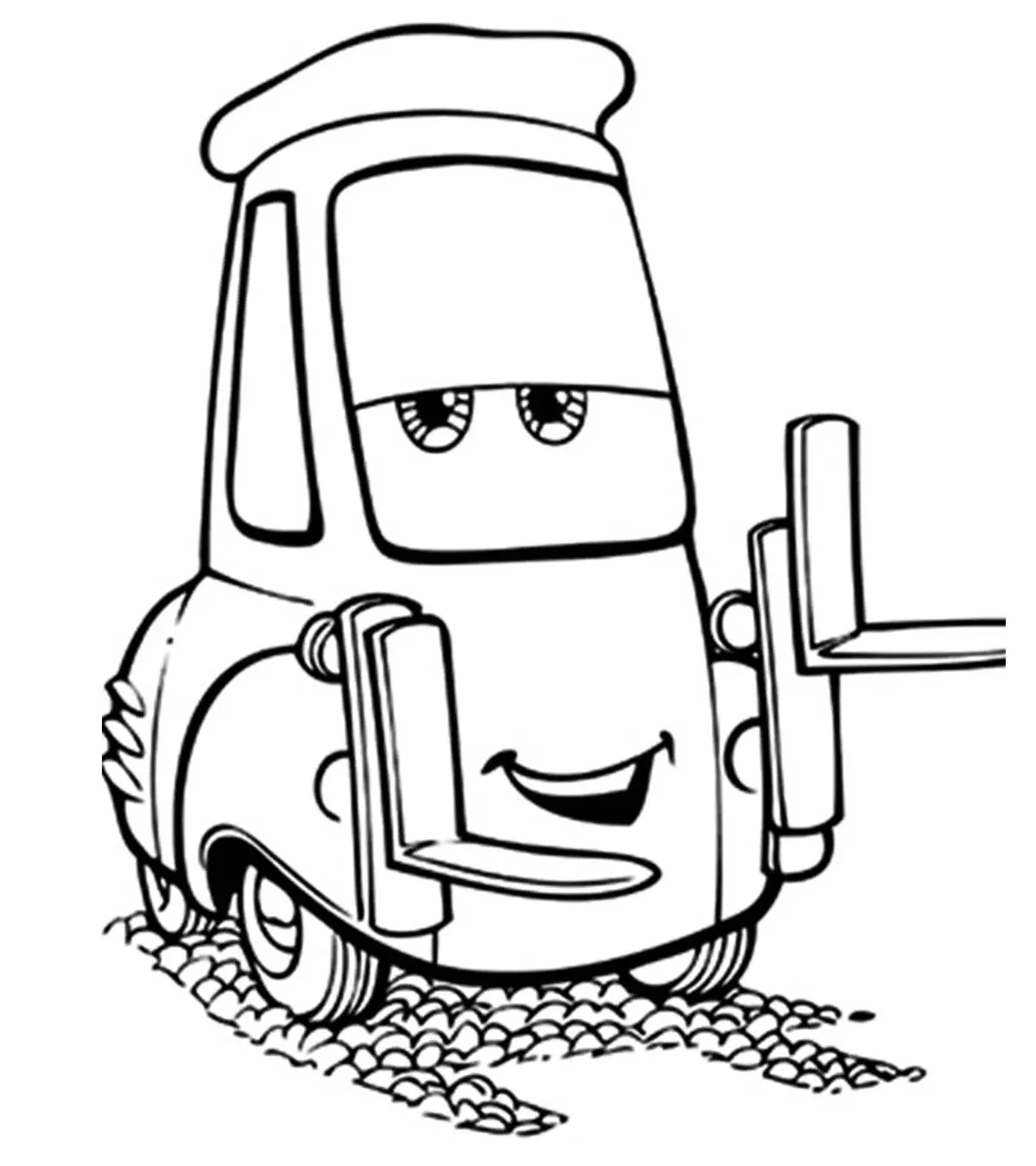
Image: Midjourney/ MomJunction Design Team
Langdi, Kho-kho, Pallanguzhi, and Lagori are some of the famous traditional Indian games for kids. They are a part of India’s rich heritage, history, and culture. They have been mentioned in many ancient Indian scriptures indicating their existence for many centuries. With the increasing prevalence of video games, online games, and gaming gadgets, these traditional games have lost their importance. However, these games should not be forgotten, and schools may also consider adding them to the curriculum as they include physical exercises and are a lot of fun. They help children improve their motor and social skills. Read this post to learn about these and many other indoor and outdoor traditional Indian games.
Key Pointers
- The traditional Indian games played for generations have been losing popularity lately.
- Pachisi, ashtapada, pallankuzhi, and moksha patam are games that can keep you engaged for hours.
- These games teach some basics such as strategy, discipline, and sportsmanship.
Traditional Indian Indoor Games
Traditional Indian indoor games for kids usually require a lot of mental work and help improve children’s problem-solving skills. Some of these games have also been adopted by the Western world, and now we know them by their more popular English names.
1. Pachisi/Chaupar
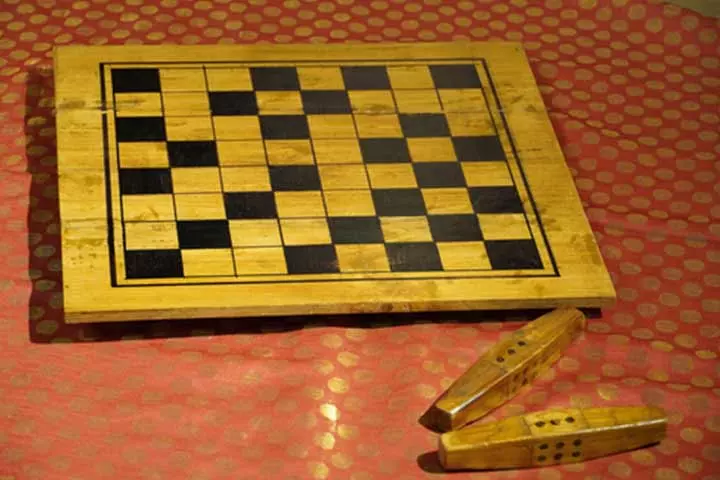
Pachisi or Chaupar is a well-known board game since it was the genesis of the Kurukshetra war in Mahabharata. The Mughals were fond of this game, too. Pachisi was traditionally played on a symmetrical cross cloth. On the other hand, Chaupar was a board game invented in the 4th century.
In both these games, two to four players use cowrie shells and dice to plan their maneuvers and attack opponents. Now, you call this game Ludo, one of the more popular games today. Pachisi or Chaupar is an excellent game to teach your child how to plan and execute.
2. Anchankal/Kallankal
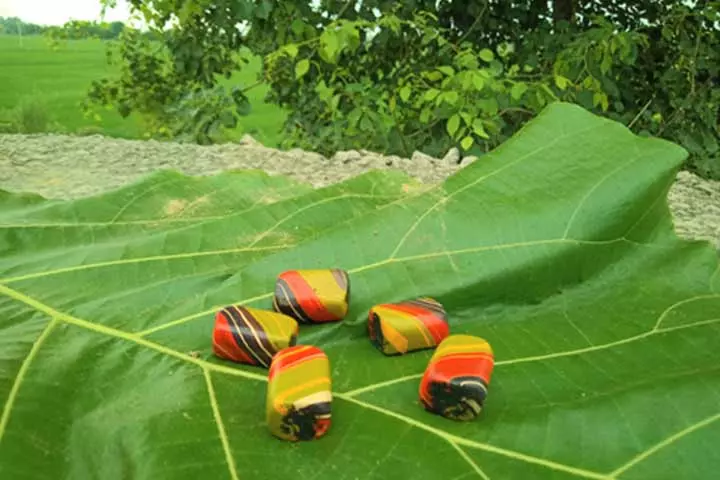
This game is widely played in Tamil Nadu. As the name of the game suggests, Anchankal is a game composed of five stones. The game improves hand-eye coordination, concentration, memory, and aiming abilities. This is a very engaging game, and the best part is that you can create your own steps.
In the original game, you use five smooth stones that can be held in your hand. Place the stones on the floor or any flat surface. Pick one stone, toss it in the air, and while that stone is in the air, pick another stone from the ground, while catching the stone tossed in the air before it hits the ground. Repeat this with the rest of the stones.
You can continue this game by picking up different numbers of stones from the floor, or even throwing a different number of stones into the air, and then picking up other stones before other stones fall. It is important that you do not let the stones tossed in the air fall on the ground. It requires some practice, but once you master it, you can enjoy hours of entertainment.
3. Ashtapada
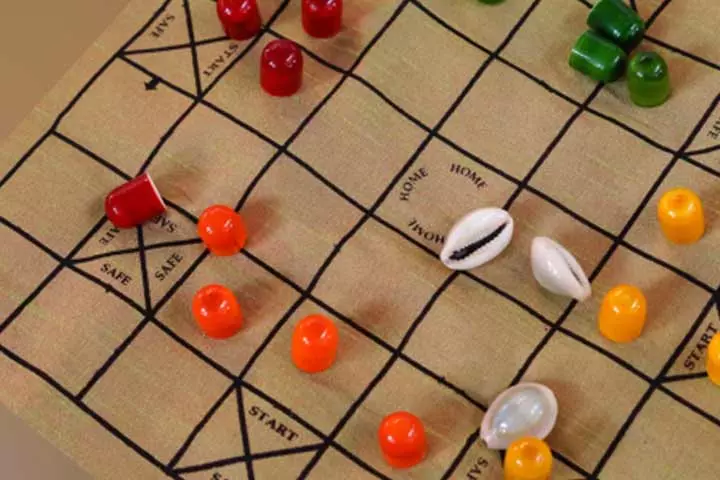
Ashtapada is the predecessor of chess. Just like a chessboard, the Ashtapada board is also divided into an 8×8 square grid but of one color. Ashtapada is a dice game. There are markings on the corners and the center square of the board. These squares are called castles. The pieces on these squares are safe, captured, or removed by the opponents.
Each player starts with an even number of pieces to play the game. The pieces must be moved clockwise around the board to enter the castle on the outer edge. Then they enter the castle in the center in a clockwise direction. This is a game to reach the castle.
Another variation of Ashtapada is Dasapada which is played on a 10×10 board.
4. Chaturanga

Chaturanga is an ancient strategy game invented in India. It is believed to be the ancestor of strategy games, such as Chess, Xiangqi, Shogi, and Makruk. Chaturanga is mentioned in many ancient scripts. It is played on the Ashtapada board. There are two players.
Just like modern chess, Chaturanga has various pieces — the King (Raja), General (Mantri or Senapati), Rook (Ratha), Elephant/Bishop (Gaja), Horse/Knight (Ashva), and Pawn (Padaati or Bhata). Each piece moves in a certain direction.
The ultimate goal is to get the opponent’s king into trouble so that he cannot move without being taken by the enemy. Kings and generals played this game to gain new ideas about the form of war offensive.
5. Pallankuzhi

It is believed that this ancient game originated in Tamil Nadu but later spread to other states such as Andhra Pradesh, Kerala, and Karnataka. This game gained popularity even in Sri Lanka and Malaysia. The game is still played in some rural parts of India and is called Kuzhipara, Ali Guli Mane, or Picchala Peeta in different languages.
In this game, we use a rectangular board that is divided into two rows and seven cups. Players must use 146 counters to put in these cups. These counters are usually cowrie shells or tamarind shells. Each cup contains 12 counters. In the middle-row cups, only two counters are placed. There are two players taking turns.
The starting player picks the counters from any of the holes on their side and assigns a counter to each cup in a counterclockwise direction. Once they reach the end of their cups, they move on to their opponent’s cups. When their counters are over, they pick the counters from the next cup and continue the game. If the last counter falls into a cup with an empty cup beyond, the counters in the next cup are captured by the player. The next player takes over.
The game continues until the last counter falls into a cup with two empty cups beyond it. The player can capture no more counters, and their turn is over.
In this intricate game, there are other rules that make it interesting. Although this game is best played between two players, even one person can play the game on a lazy afternoon. Pallankuzhi can be played by both children and adults.
6. Antakshari

Antakshari is one of the most popular traditional Indian games. The game is played widely in social gatherings and weddings. Children play it in their free time at school. The best thing about this game is that it can also be played in a small space, just like when traveling in a car.
Antakshari is the best way to spend time. You need to have a repertoire of songs to play this game. You can play this game in a team. Each team sings in turns, starting from the last letter of the previous song sung by the other team.
 Did you know?
Did you know?7. Moksha Patam

Moksha Patam or Parama Padam is a board game that is believed to have been invented in ancient India and has spread to other parts of the world. Now, it is commonly called Snakes and Ladders. In ancient India, it was used as a form of entertainment and to teach morality to children.
The basic concept is to teach people that the way to reach heaven or “moksha” is to abandon the bondage of passion. The ladder symbolizes the rise from one level of enlightenment to another, while the snake symbolizes immoral behavior and how they lead to degeneration. This game is played by two to four players. The first player to reach the “highest heaven” is the winner.
8. Aadu puli aatam
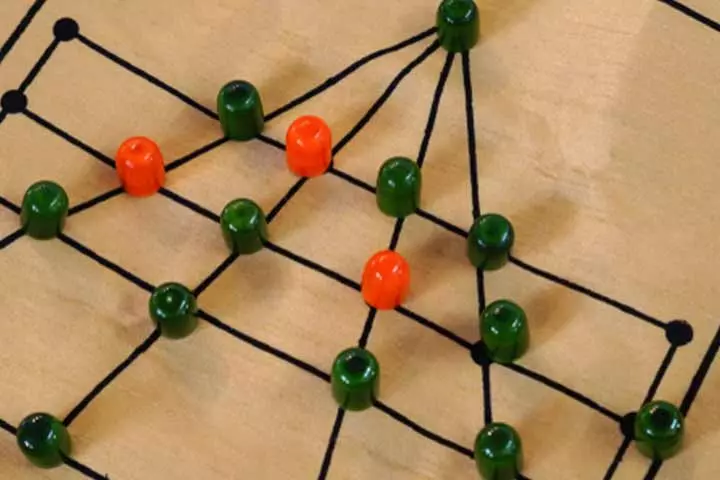
Aadu puli aatam literally means “a game of lambs and tigers.” It is called meka puli aata in Telugu and aadu huli aata in Kannada. This is a two-player game where the tigers hunt goats on an asymmetric grid.
In this game, first, draw a triangle and divide it into three equal parts. Then, draw a rectangle on the entire triangle, intersecting it throughout. Then divide the rectangle horizontally into two parts. One player has 15 “goats,” and the other player has three “tigers.” Each of these pieces is placed at the intersection point. Tigers try to eat goats, and goats try to actively stop them. The pieces are usually cowrie shells or pebbles.
9. Chowkabara

This is another four-player game that is similar to Chaupar or Ludo. The goal of the game is to achieve home safety without getting removed by the opponents’ pieces. The game is popular all over India and is known under different names, such as Eight and Four, Kattam Kalo, Chauka Baara, Changapoo, Ettu Veedu, Kattam Kazhi, and Aada Sada.
10. Pancha kone
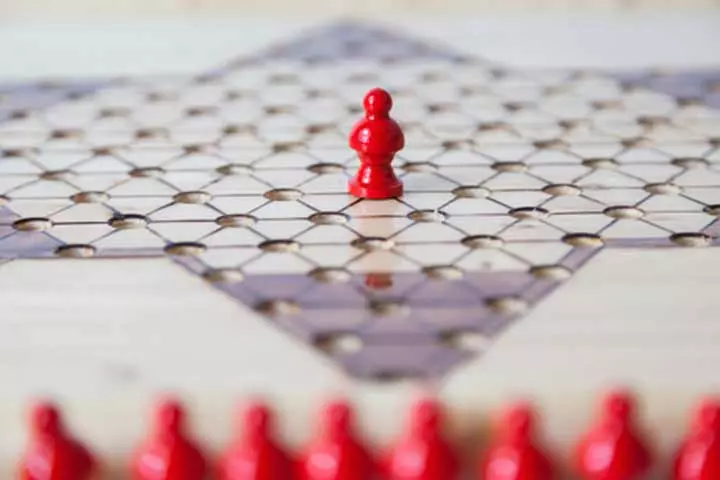
Pancha kone is a popular Indian traditional game. You can find this game board engraved on ancient temples and monuments all over India. Pancha kone means five corners or five cones. It is played on a board with five-point stars painted on it. This is a strategy game that requires the player to move around the board and finally with a single piece. Chinese checkers is based on this game.
11. Kalaney belaney

Kalaney belaney literally means “black elephant, white elephant”. It is believed that this Indian game originated in Karnataka. It is a simple game for two players. Each player has a number of pieces that they arrange on their side of the board. The first player rolls the dice. They remove the opponent’s pieces from the board according to the number on the dice. The player whose pieces are standing, in the end, is the winner.
12. Lattoo

Lattoo refers to the traditional spinning top, and even today, it is still highly sought after among children in rural India. The game has existed since ancient times and has been an evergreen game for generations. In the early days, these tops were made of clay. Later, they were made of wood. Today, you can find plastic tops. These tops have steel pointed nib at the bottom. They come with a long string.
The player has to wrap the string around the top as tightly as they can. Then, they must hold the other end of the string and throw the top parallel to the ground, unwinding the string and making the top spin on the ground. If there are many children playing this game, they can start a competition on who has the longest spin time.
Traditional Indian Outdoor Games
These games perfectly blend physical strength and endurance with mental exercise. The outdoor games and activities for kids will provide them with much-needed exercise, but also help them learn basic life skills such as teamwork and strategy. These games also help improve children’s stamina, core strength, balance, and hand-eye coordination.
13. Gilli danda
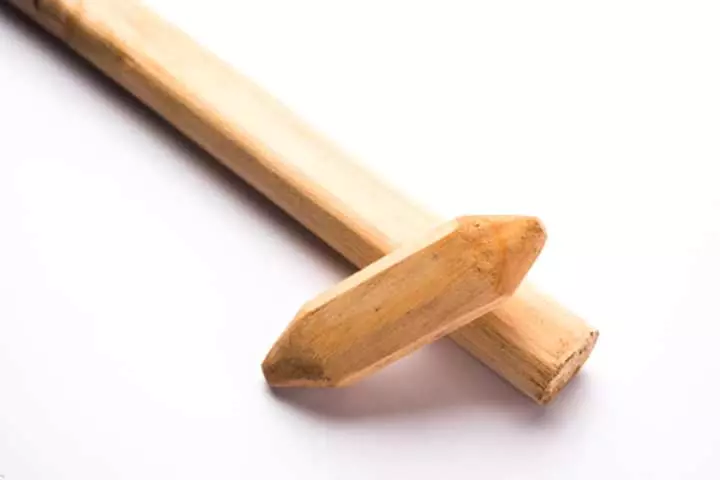
The Gilli danda can be compared to baseball and cricket, except that it does not use a traditional bat. In this game, two pieces of wood are used — a small piece of wood that is called gilli and a longer piece of wood called danda. The gilli is equivalent to the ball, and the danda is equivalent to the bat. Two teams are required to play this game. Each team can have any number of players.
The gilli is placed on the ground. One player from the first team takes the danda in their hand and hits the gilli hard. The aim is to hit it as far as possible. Immediately, the team members of the other team rush to catch it. If they catch it before it hits the ground, they get the chance to bat. Otherwise, another team member from the first team will repeat the process.
14. Kho-kho

Kho-kho is a high-intensity strategic game that is very popular in India. In fact, it is one of the most popular Indian traditional games and is also widely played in Indian villages and in many cities. Schools often hold interschool kho-kho competitions.
In this game, there are two teams, each with nine players. A team of eight players squat on the ground in a row, each player facing alternate directions, and one player is an active chaser. The chaser runs around a player who is the runner. The goal of the game is that the chaser should touch the runner.
The runner can run between the sitting players, but the chaser must run from end to end. However, the chaser can touch any of the sitting players by saying, “kho,” and the player takes the place of the chaser while the chaser takes the place of the sitter. The pace of this game is fast, lasting more than half an hour.
15. Chhuppan chhuppai

Chhuppan chhuppai is most famous for its English name “Hide and Seek.” Any number of players can play this game, and kids of all ages like to play it. One player has to take the “den,” and the other players go and hide in different places while the “denner” counts to ten. They must search for the hidden players. The first person caught assumes the den in the next round. If one of the players touches the denner without their knowledge, the denner has to take up the den again. This game teaches children how to play together.
 Trivia
Trivia16. Aankh micholi

Aankh micholi is a variation of Chhuppan Chhuppai. In this game, the denner is blindfolded, and the other players run around them, calling them out or touching them slightly. If the denner touches one of the players, they are blindfolded next. This game helps develop your child’s sensory skills, improve alertness, and exercise their tactical sense.
17. Kancha
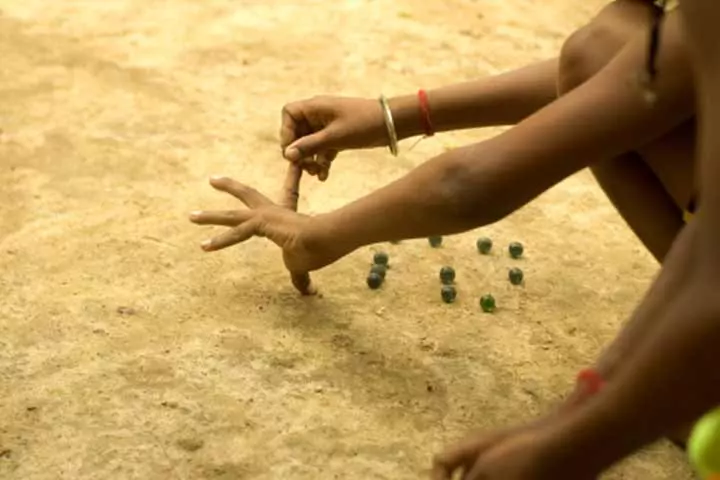
Kancha or goti is a traditional Indian game that attracts people of all ages. Usually, you will find a group of children playing this game on the street. It is played using green glass marbles known as kancha. These marbles are placed within a circle. The goal is to hit a specific marble with another marble from outside the circle.
Hold the marble with the forefinger of the left hand and two fingers of the right hand. The forefinger is pulled back as far as it can go and released. The marble flies to the target and hits the selected marble. In an advanced version, you can select where the marble has to go exactly, just like in golf. Any number of players can play kancha, and it is very popular because it can be played on any surface and in any weather.
18. Lagori

Lagori, lingocha, and sitoliya are some of the names of this traditional Indian game played with stones and a ball. There are two teams in this game, each with at least three players. Before the game starts, stack seven or eight flat stones on top of each other. Each team has nine chances to knock the stones down using the ball.
Once the stones are hit, the other team grabs the ball and tries to hit any player of the first team below the knees. At the same time, the first team tries to rebuild the pile of stones. If no player from the first team is hit before the stack is complete, they get a point. If any player is hit, the other team gets points.
The game continues, and other teams take turns to compete. Lagori is one of the classic Indian games played since ancient times. It is not only interesting but also helps children develop important social skills by interacting with their peers in a dynamic environment.
19. Kith kith

Kith kith is also called stapoo and is popularly known by its English name, Hopscotch. This is a traditional Indian game for children aged 6-12. You need some space, chalk, and a stone to play this game. Draw a grid on the ground with the chalk and number it. Each player has a chance to throw the pebbles. The square where the pebble falls is where the player must jump around. Players must hop in order to reach the targeted square.
20. Vish amrit

This is another popular game among school children. This is an outdoor game that involves many children. One player becomes a “denner” and runs behind other players. The moment they touch any other player, they say “vish” which means poison. The touched player must sit down and cannot move until another player comes and touches them to give them “amrit” or nectar. This is a fun game that can cultivate children’s social skills and agility. The game is also called Lock and Key in some places.
21. Kokla chapaki

This is a very popular game among children aged 4-8. It is also called the Drop the Handkerchief game. Children in Punjab often play this game. There can be any number of players. You only need a piece of cloth.
All the players, except one, form a circle. The standing player starts running around the sitting players in a circle carrying a handkerchief. They sing the song “Kokla chapaki jumeraat aayi aye jera agge pichey wekhey odhi shamat aayi aye.”
While running in this way, the player places the handkerchief behind one of the players. The player behind whom the handkerchief is placed, picks it up and starts running behind the tagger. The tagger tries to occupy the vacated place before being caught by the chaser.
One of them sits down, and the other continues the game with a handkerchief. This game requires players to be vigilant at all times to know when the handkerchief falls behind them. This game helps to develop endurance and observation skills.
22. Kabaddi
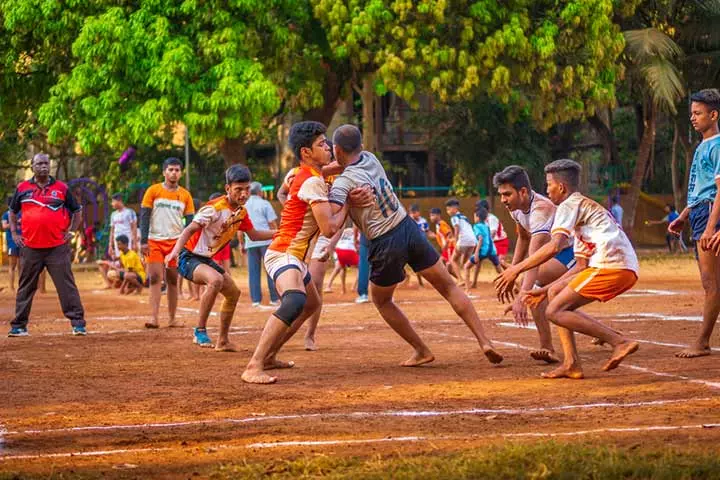
Kabaddi is a traditional Indian game that is now played at a national level. There are Kabaddi championships that are held all over the country, and many people of all ages participate in these competitions.
In Kabaddi, there are two teams, each with seven players. Each occupies one side in a rectangular court, and the court is divided at the center. When the game starts, one of the players on the first team starts saying, “kabaddi, kabaddi” without pausing for breath.
The two teams must try to score a point through offense and defense. When attacking, the offensive team sends the raider into the opponent’s half. The raider must touch another member of the opponent’s team to score. When defending, the goal is to capture the raiders by dropping them to the ground or simply preventing them from returning to their half until they run out of breath.
23. Posham pa

This is an outdoor game played by three or more players. The group game for kids can be played by children aged 4-8 years. Two players join hands to form a “gate”. They sing a song. The other players pass through it in a line. After the song ends, the gatekeepers lower their arms and trap the player inside. The game continues till all the players have been caught in the gate.
The game is played differently in different regions of India. In some places, the trapped player is asked a question secretly, and the answer they give will determine which team they join. Once the two teams are formed, they play a brief game of tug-of-war. The team that manages to pull the opponent team wins.
24. Dhopkel

Dhopkel is one of the most fun ball games for kids mainly played in Assam. It is somewhat similar to Kabaddi. Dhop is the name of the rubber ball that two teams throw into each other’s courts over through the center line. The purpose of the game is to allow the player of one team to bring back the ball from the opponent’s team without being caught.
25. Maram pitthi

This game is the Indian equivalent of Dodgeball. There are two teams scattered throughout the field. Players of one team try to hit the players of the opposing team with a sponge ball. Once a player is hit, they are out of the game. The ball can be passed between the players of the same team.
26. Pallanguli
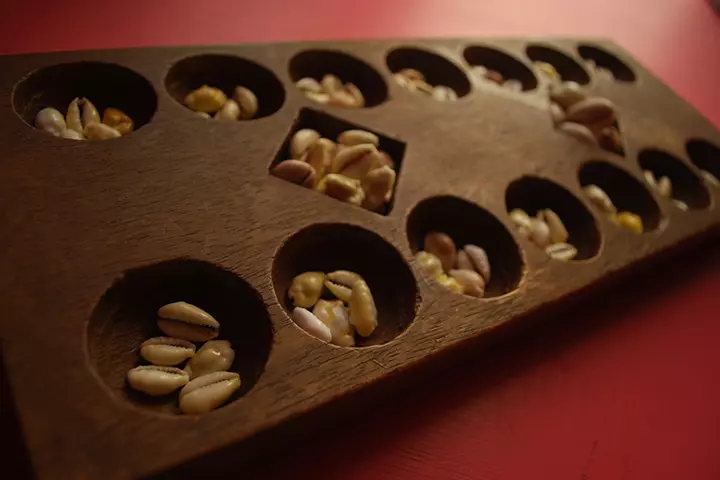
Pallanguli, also known as Pallankuli, is a traditional and ancient mancala game that originated in South India, particularly Tamil Nadu and Kerala. The game involves two players using a wooden board with fourteen pits, with seven pits on each player’s side. Cowry shells, seeds, or small pebbles are counters within the pits.
To begin, stones or pebbles are distributed on both sides of the board. The player taking the first turn selects seeds from any of their respective pits, typically moving from the right side to the left side in an anticlockwise direction. While traversing the board, the player deposits seeds into the pits on both sides simultaneously. Once the chosen seeds are exhausted, the player can continue picking seeds from the next pit adjacent to where they stopped, and the process repeats vice-versa. If an empty pit is encountered after the last seed is dropped, the player captures the pits following the empty cup. However, if two consecutive empty pits are found, no seeds are captured, and the turn ends, with the opponent taking control of the game. The one with the highest number of seeds is the winner.
Frequently Asked Questions
1. Why are Indian traditional games important?
Traditional games of India help promote social interactions and teamwork. They improve physical development, brain stimulation, concentration, and problem-solving skills. More importantly, these games help uphold India’s rich tradition and enlighten children about it.
2. What do you mean by traditional games?
Traditional games are leisure activities played collectively to pass the time. Traditional games are passed down through generations and promote the traditions and culture of the land. Some examples are Chor Police, Gulli Danda, Chokri, Dikori, Chor Sipahi, and Pitthu.
3. How do traditional games contribute to human happiness?
Traditional games help people make the most of their free time while improving physical and mental well-being. They also enable social interaction and help make friends. They provide people with a dynamic social life, thus promoting happiness.
4. How can traditional Indian games be incorporated into current educational practices?
While most schools have physical education sessions, some include classic games played through generations. Schools could enrich their curriculum by organizing special traditional game events. This approach would promote cultural awareness besides developing children’s social and physical skills.
The list of traditional Indian games for kids should be enjoyed and handed over to generations for years. These games are evergreen and entertaining to keep the kids and the adults deeply engrossed for long hours together. Therefore, these games should be introduced to them at an early age as they also encourage multiple skill development. Also, you can spend quality time with your family and create lovely memories for life.
Infographic: Traditional Indian Outdoor Games
India is renowned for some popular ancient games passed down for generations. If you want to involve your child in these games, this infographic can help you choose one from the famous traditional outdoor Indian games. So, let your child indulge in some physical activity through these games.
Some thing wrong with infographic shortcode. please verify shortcode syntax
Illustration: List Of Top 25+ Traditional (Desi) Indian Games For Kids
_indian_games_for_kids_illustration.jpg.webp)
Image: Stable Diffusion/MomJunction Design Team
Watch this video to learn about the traditional games played in India. These games are a part of most Indian children’s lives.
Community Experiences
Join the conversation and become a part of our nurturing community! Share your stories, experiences, and insights to connect with fellow parents.
Read full bio of Sharon Katy
Read full bio of Nisha Bharatan
Read full bio of Harshita Makvana
Read full bio of Praggya Joshi





